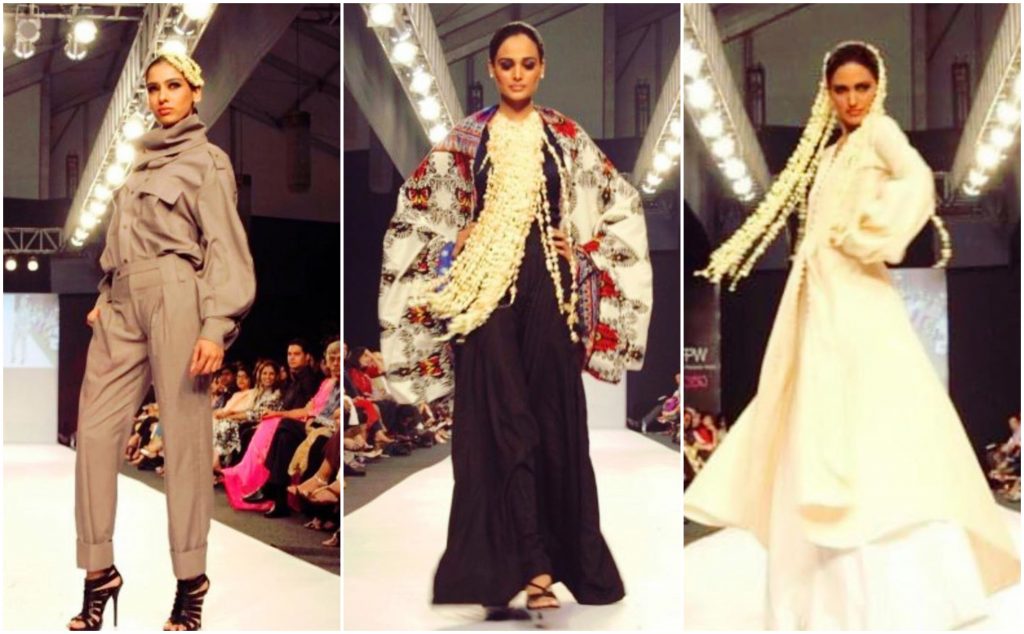Table of Contents
Toggle1. Types of Fashion Collections
Haute Couture Collections
-
What It Is: Haute couture refers to custom, made-to-order pieces that are often hand-crafted with the finest materials and intricate details. These collections are highly exclusive and often showcased at Paris Haute Couture Fashion Week.
-
What to Expect: Haute couture collections are the ultimate expression of luxury and craftsmanship, offering elaborate designs that are often bold, imaginative, and one-of-a-kind. These pieces are typically worn by celebrities for special events like the Met Gala, red-carpet events, or private affairs.
-
Example: Chanel, Dior, and Valentino are renowned for their haute couture collections, which are known for their flawless construction and innovative designs.
Ready-to-Wear Collections (Prêt-à-Porter)
-
What It Is: Ready-to-wear collections are mass-produced and designed for a wider audience compared to haute couture. These collections are sold in boutiques and department stores and cater to everyday consumers, though they maintain high standards of design and quality.
-
What to Expect:https://fashions-type.com/ feature stylish, wearable clothing that reflects the current trends while being practical for daily wear. They often include separates such as skirts, blouses, dresses, suits, and outerwear, making them versatile for various occasions.
-
Example: Designers like Gucci, Alexander McQueen, and Balmain often present ready-to-wear collections that balance high fashion with accessibility.
Resort/Cruise Collections
-
What It Is: Resort collections are designed for warmer climates and holiday destinations. They are typically showcased in the off-season, between the spring and summer or fall and winter fashion weeks.
-
What to Expect: These collections often focus on lighter fabrics, swimwear, and vacation-friendly styles like breezy dresses, shorts, and lightweight jackets. Resort collections are ideal for those planning for vacation or warmer months.
-
Example: Collections from brands like Louis Vuitton, Chanel, and Dior often feature vibrant colors, tropical prints, and luxurious vacation-inspired pieces.
Pre-Fall Collections
-
What It Is: Pre-fall collections are typically presented before the main Fall/Winter collections. These designs are intended for consumers who are looking to transition from the summer season into fall, bridging the gap between the two.
-
What to Expect: Pre-fall collections generally focus on layering pieces, warm fabrics like wool and cashmere, and a mix of bold and muted colors suitable for the cooler months.
-
Example: Designers like Prada, Versace, and Fendi often incorporate luxurious fabrics, structured outerwear, and statement accessories in their pre-fall collections.
Spring/Summer Collections
-
What It Is: Spring/Summer collections are presented during the major fashion weeks held for the upcoming year’s spring/summer season. They highlight the light, breezy fabrics and fresh colors associated with the warmer months.
-
What to Expect: These collections showcase bright, lively colors, floral prints, and airy silhouettes. Light fabrics such as cotton, linen, and silk dominate these collections, creating garments that are both stylish and comfortable for the summer.
-
Example: Major designers such as Ralph Lauren, Chanel, and Marc Jacobs consistently present Spring/Summer collections that embrace the freedom and liveliness of the season.
Fall/Winter Collections
-
What It Is: Fall/Winter collections are typically shown during the fall/winter fashion months and focus on warm clothing for colder weather. These collections often showcase more structured garments and heavier fabrics.
-
What to Expect: Expect rich, darker tones, luxurious fabrics like velvet, wool, and cashmere, as well as the layering of coats, sweaters, and pants. The Fall/Winter collections often reflect the themes of coziness and warmth, with outerwear playing a prominent role.
-
Example: Collections by designers like Tom Ford, Burberry, and The Row highlight the sophisticated, elegant side of Fall/Winter fashion, incorporating high-quality textiles and unique detailing.
2. The Design Process Behind Fashion Collections
The process of creating a fashion collection is an intricate and lengthy one, requiring immense creativity, planning, and technical skill. Here’s a brief overview of how designers bring their vision to life:
Conceptualization & Inspiration
Every collection begins with inspiration. Designers typically gather ideas from art, nature, history, or personal experiences. These initial concepts are translated into mood boards, sketches, and color palettes, forming the foundation for the collection. Designers often aim to tell a story through their pieces, whether it’s through visual elements or thematic undertones.
Fabric Selection & Materials
Once the theme and colors are established, designers work closely with fabric houses to select materials that will bring their vision to life. Choosing the right textiles is crucial, as it affects the overall aesthetic, feel, and functionality of the garments. For haute couture collections, designers often source luxurious, rare fabrics, while ready-to-wear collections focus on both quality and affordability.
Pattern Making & Prototyping
The next step is creating patterns, which are templates used to cut fabric into the desired shapes. Pattern making is a precise and technical process, requiring deep knowledge of garment construction. Once the patterns are made, prototypes or samples of the designs are created. These prototypes are used to refine fit, proportions, and design elements.
Fitting & Refinement
After the initial prototypes are made, models are brought in for fittings to see how the clothes look in real life. During these fittings, adjustments are made to ensure perfect proportions, comfort, and wearability. For haute couture collections, the process of refinement may involve multiple fittings to get each piece just right.
Finalizing the Collection
Once the designs are perfected, the final collection is produced. This includes finishing touches such as embroidery, handwork, and other embellishments. Once all the pieces are ready, the collection is prepared for presentation, whether it’s on the runway or in a lookbook.
3. What Makes Fashion Collections So Important?
Setting Trends
Fashion collections play a significant role in shaping global fashion trends. Designers’ creations dictate what will be in style for the upcoming seasons, influencing everything from street style to high-street collections. What happens on the runway often trickles down to what consumers can buy in stores.
Cultural Reflection
Collections often reflect current events, societal issues, or cultural shifts. Designers use their collections as a platform to address everything from gender politics to climate change. The messaging embedded in these collections can inspire change and spark conversations about the world around us.
Art and Expression
Fashion is not just about clothes; it’s an art form. Collections allow designers to showcase their creativity and innovation, translating their visions into tangible garments. Each collection is a piece of wearable art that reflects the designer’s unique perspective and vision.
Economic Impact
Fashion collections have significant economic importance. They drive retail sales, influence the design industry, and contribute to the global fashion economy. Major events like Fashion Week generate millions of dollars, with brands securing buyers and investments based on their collections’ success.
4. Notable Fashion Collections in History
Several fashion collections have had an enduring impact on the industry. Here are a few that are widely regarded as groundbreaking:
-
Chanel Spring/Summer 1955: Coco Chanel’s iconic collection introduced the concept of comfortable, elegant fashion with the famous Chanel suit, establishing a timeless style.
-
Dior’s New Look (1947): Christian Dior’s first post-WWII collection was a revolutionary moment in fashion, bringing back femininity with voluminous skirts and a focus on the hourglass silhouette.
-
Alexander McQueen Spring/Summer 1999: McQueen’s runway shows were legendary for their theatrical nature. His Spring/Summer 1999 collection, featuring Shalom Harlow being spray-painted by robots, is considered one of the most avant-garde fashion moments of all time.
Conclusion: Fashion Collections as the Heartbeat of the Fashion Industry
Fashion collections are a beautiful blend of art, creativity, and commerce. Whether haute couture or ready-to-wear, these collections offer a glimpse into the future of fashion, setting trends and influencing the way we dress. The passion and craftsmanship behind each collection inspire both designers and consumers to embrace fashion as a form of personal expression and cultural conversation. For anyone fascinated by the art of fashion, collections are not just about clothing—they are about storytelling, innovation, and the power of design.





